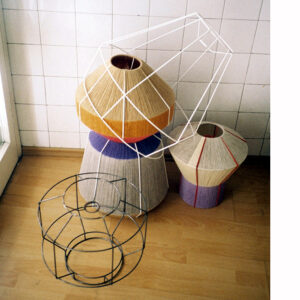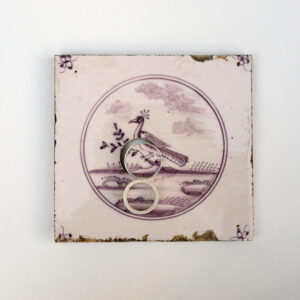mdby……OJI MASANORI








Today, we show you the work of Oji Masanori, a Japanese designer, everything manufactured and you will get to know his essence to design and live
Oji, you begun working in an architecture office, and later in a graphic designer office, how did you decide to give up all that?
I studied calligraphy in high school and architecture in university. I had a vague idea about my career right after graduation. I didn’t know what I was really fit for or wanted to do. I first worked for an architectural design office. During this period, I felt that large-scale objects didn’t feel real to me. So I changed my job and worked for a graphic design office. I again felt that the flat-surface world didn’t suit me, and I spent some time wavering. It was when I established my own office, made my own products and sold them that I finally thought, “This is it!” It just clicked.
I realized then that I was better at objects rather than space, and that I liked textural things better than flat surfaces. I also realized that different scales suit different people.
How did you create your brand OJI & DESIGN?
As I wrote for the first question, my idea was very vague at the beginning. I established a design office at my birthplace Hiroshima, where I specialized in graphic design. During this period, I designed and sold some self-products. This experience made me want to do more products designing, so I left the Hiroshima office to my business partner and moved to Tokyo. There I started a new business around product designing. I met design director Shu Hagiwara and craft buyer Akiko Hino along the way. They introduced me to the work of designing crafts and traditional handicrafts.
Did you have a mentor that has supported and guided you?
I wouldn’t be doing what I am now had I not met calligrapher Toshihiro Kobayashi, who taught me calligraphy in high school. Generally in Japanese education calligraphy lessons aim to improve the pupils’ handwriting. Mr Kobayashi taught me calligraphy as “art”, and I apply what I learnt then to my current job.
I am really interested about your wood work, you use several types of wood, do you have a favorite one?
I do not have any particular wood materials that I like the most.
I like to know the characteristics of the wood that is sourced where the products utilizing that particular wood are manufactured. I ask the craftsman about its workability and wish to make a shape that is best suited the characteristics and the workability.
Your works in wood seem to be based on geometrical concepts, is geometry important for you to show it in your work?
I like it to be geometrical. But, I carefully use geometrical themes only when doing so contributes to problem solving; it is not that I design in order to use geometrics.
Colors do not take part of your work in wood, only gold or dark finishes, which is the reason for that?
I believe color is the surface structure of a material being visible to the human eyes. So, I like finishes that display the surface that is in line with the material.
I really like this product, called 真鍮の箸置き, why do you make them in that gold finish?
I don’t think it would be appropriate to use wood to make the shapes of the chopstick rests.
Do you design all your objects before you begin to create them? Or you have the idea in mind, and you just work with the material?
I always make a careful observation on the manufacturing processes and the materials and communicate well with the presidents of the manufacturers who are the craftsmen themselves. I do not think I understand everything about them but deeply respect them. The goal is not to make the shapes; the shapes are necessary to make the best use of the materials.
Do you fabricate each object you design by hand? Or you have an industrialized process to do it?
I manually draw several sketches, digitally make a three-view drawing, and build a model right away. I work around the design while redoing the model many times. I do not use a three-dimensional modeling software.
How your ideas come up? Which ones are your sources of inspiration? Are you influence by anyone?
My own everyday life. Catching a glimpse of my friends’ lives in Japan and abroad. Talking to the company presidents and craftsmen in the factories. Chatting with the shop staff. Museums in various cities storing excavations.
By seeing and hearing these things, I wish to make products that help the maker and the user to connect with one another and live together in continuity and harmony.
Do you spend time in your work to publications or other media to make yourself know and increase sales, or you have someone to help you?
I only tweet and post photos on Instragram; I am not particularly well-connected with the media.
Which is the way you sell your products?
Each maker distributes their own items to retailers directly. For the overseas markets, I collaborated with my friends to found a company named IFJ, and the company is in charge of distributing all the items I design.
Which ones have been the best and the worst moments of your professional life?
The best thing is that FUTAGAMI was well accepted by sensible people all over the world. No worst moment. Everything that happens to me is inevitable, and I do not perceive them as bad things.
What is beauty for you?
Care for others. I aim to be one with others.
What is the most difficult and the one you like more in your work?
The most difficult thing is when I don’t see the essence or the very core of various matters in question.
What I like is the dynamism at the moment when the figure of a product begins to emerge as the connection between the matters in question begins to unfold.
Which one has been your biggest success?
The biggest success is that I have got a wonderful company.
What is your biggest dream for the future?
To make a place where my associates from all over the world can gather.
Any advice?
Accept all hardships and fortunes, and everybody who happens to be present at the very moment does the best he/she can do.


